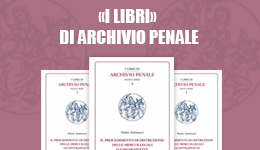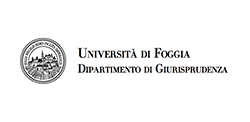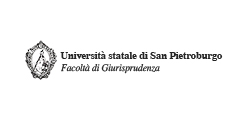Verso il tramonto dell’ostatività penitenziaria: un’attesa lunga trent’anni
Archivio Penale
© dell'autore 2022
Ricevuto: 02 September 2022
| Accettato: 09 September 2022
| Pubblicato: 12 September 2022
L’intero articolo è disponibile
Riassunto
Da sempre al centro di un vivace dibattito politico, giuridico e culturale, il sistema delle preclusioni ostative ai benefici penitenziari e alle misure alternative alla detenzione volge ormai al tramonto. Con due celebri pronunce, infatti, la Corte costituzionale ha messo in discussione l’assunto alla base dell’ostatività: l’idea che il silenzio del reo sia indice insuperabile di mancata emenda e di perdurante pericolosità sociale. La presunzione assoluta di pericolosità sociale, discendente dalla scelta di non collaborare con la giustizia e preclusiva alla concessione di tutti i benefici e alle misure alternative alla detenzione, è già caduta – per effetto della sentenza n. 253/2019 – con riferimento ai permessi premio. Per effetto dell’ordinanza della Corte costituzionale n. 97/2021, la stessa presunzione, al momento regge, ma ha i giorni contati anche con riferimento alla liberazione condizionale e a tutte le altre misure. Con il presente contributo ci si propone di ripercorre gli itinerari evolutivi e involutivi che, nell’arco dei suoi ormai trent’anni di vita, hanno contrassegnato la storia del regime ostativo. Dopo aver ricostruito il contesto normativo e giurisprudenziale entro il quale si colloca il sistema delle preclusioni penitenziarie, particolare attenzione verrà dedicata all’esame delle più recenti pronunce della Corte costituzionale ed alle possibili ricadute sistematiche. L’analisi di tali pronunce, a sua volta, consentirà di svolgere una valutazione sull’ultimo progetto di riforma che prima delle dimissioni del Governo Draghi era al vaglio del Parlamento e di effettuare, con lo sguardo rivolto al domani, previsioni sul futuro prossimo dell’ostatività penitenziaria.
Toward the end of the system of penitentiary preclusions: a thirty year long wait
Always at the center of a heated political, legal, and cultural debate, the system of preclusions barring prison benefits and alternative measures to detention is now drawing to an end. Indeed, in two renowned decisions the Constitutional Court has challenged the assumption behind the system of penitentiary preclusions: the idea that the convicted’ silence is an absolute index of absence of reconsideration and of enduring social dangerousness. The absolute presumption of social dangerousness, descending from the choice not to cooperate with justice authorities and precluding the access to benefits and alternative measures, has already been declared unconstitutional – as a result of Judgment No. 253/2019 – with reference to premium permits. Following Constitutional Court’s Ordinance No. 97/2021 the same absolute presumption, even if still in force, is destined to fall also with reference to parole and to all other alternative measures. The purpose of this contribution is to retrace the evolutionary and involutional itineraries that, over the course of its thirty years of existence, have marked the history of the system of penitentiary preclusions. After analyzing the normative and case-law context within which the system of penitentiary preclusion is situated, specific attention will be devoted to examining the most recent decisions of the Constitutional Court and their possible consequences on the system. The analysis of these decisions, in turn, will make it possible to carry out an assessment of the last reform project that was under consideration of the Parliament assembly before Prime Minister Mario Draghi’s resignation and to make, with an eye toward tomorrow, some predictions about the near future of the system of penitentiary preclusions.
Percorso di valutazione
Peer reviewed. Certificazione della qualità











